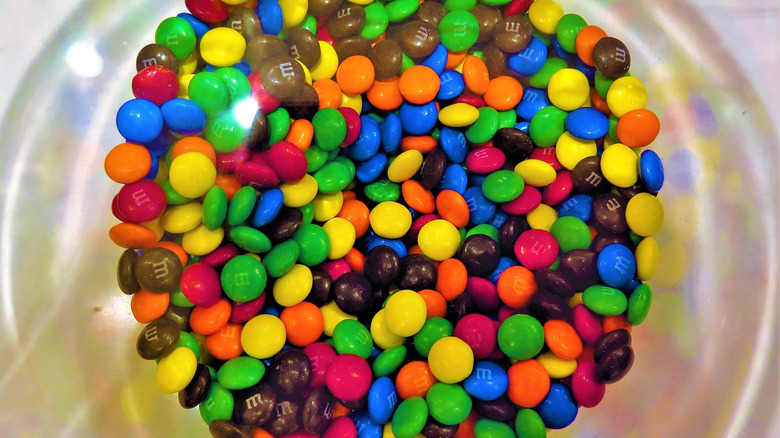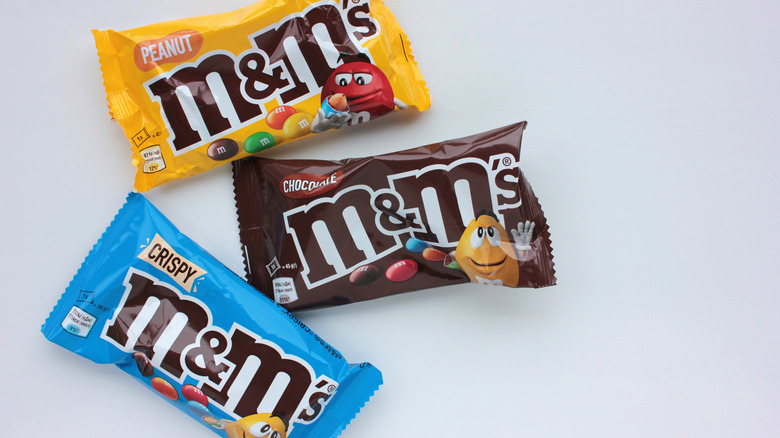Does Each M&M's Color Have A Different Taste?
M&M's attract our gaze with those brightly-colored shells of reds, greens, blues, oranges, and yellows. They appear as if each one should indicate unique flavors of candy-coated goodness, but alas, sometimes our eyes deceive us.
Just based on how many times M&M's has switched up their colors — replacing violet with tan and later replacing tan with blue, and so on — you would think that it mattered and that taste was a primary factor influencing these decisions. With M&M's though, as it should be with people, it's what's on the inside that counts.
These varied hues are merely window dressing, as each M&M is meant to taste identical, regardless of color, according to Taste of Home. So, if you want to experience distinct tastes with M&Ms, you have to consider the type of filling, which these days has expanded to include extensive selections such as peanut, pretzel, caramel, peanut butter, crispy, dark chocolate, and hazelnut.
What's your favorite color?
Although M&M's colors aren't associated with different flavors, that doesn't mean people don't prefer certain colors over others. In 1995, a popular vote from the masses chose the dynamic blue over the drab and boring tan, via Yahoo.
At various times, the company has released information that discloses the percentage distribution of each color. After they stopped divulging the statistical color breakdowns, others, including both companies and individuals, have even conducted their own experiments to determine the numbers. One such experiment from SAS Software found a discrepancy in the percentages Mars provided, and contacted the corporation to share their own figures.
As it turns out, M&M's are made at two different factories, and the color distribution percentages vary for each one. If you're more concerned with the taste or texture of your M&M's than the color, consult our rankings list of popular flavors, and see which ones catch your eye.

